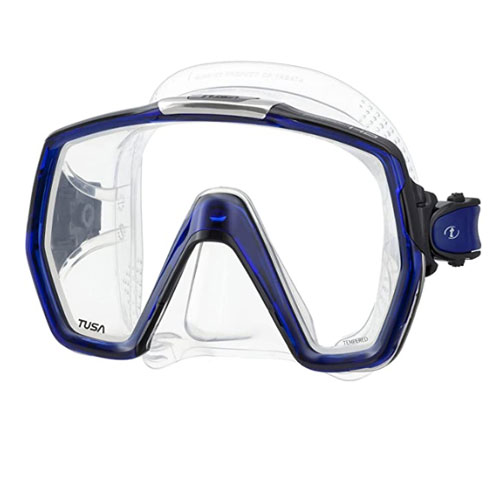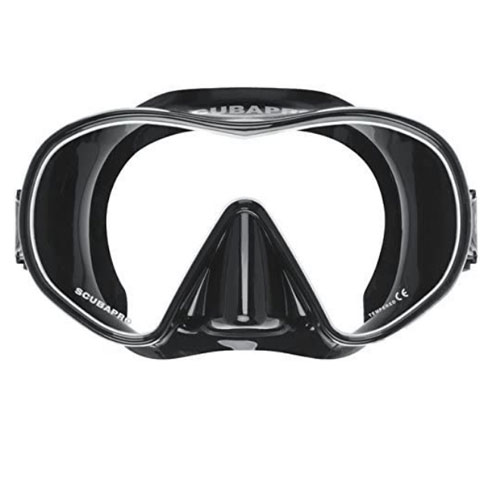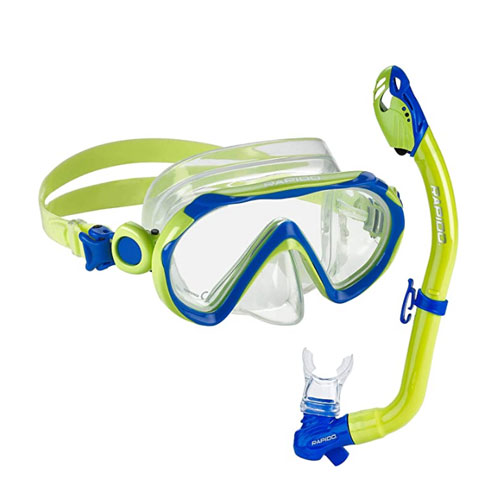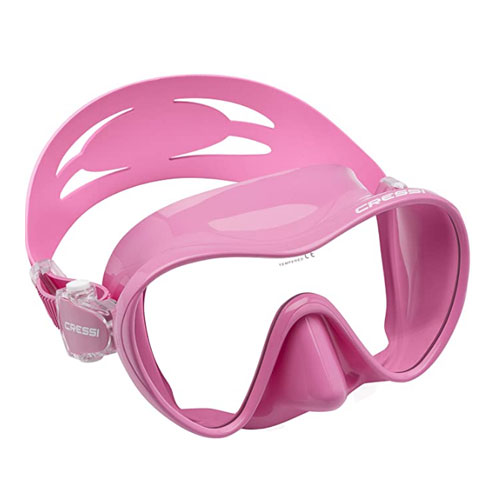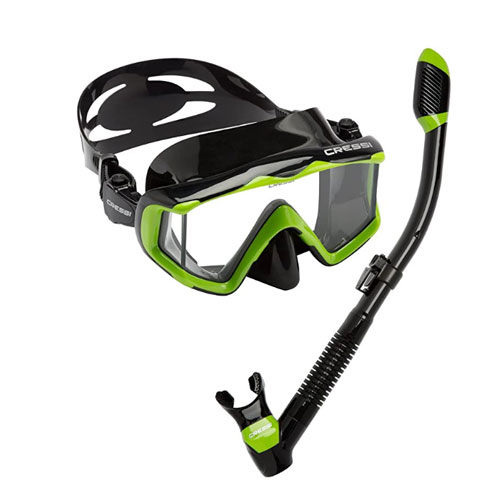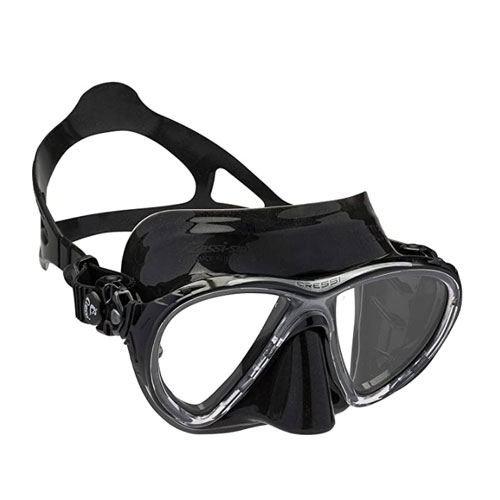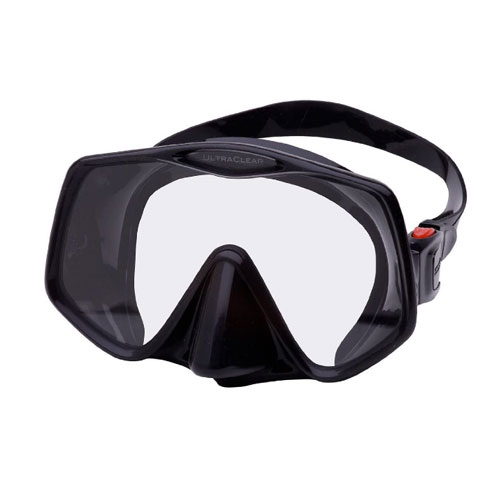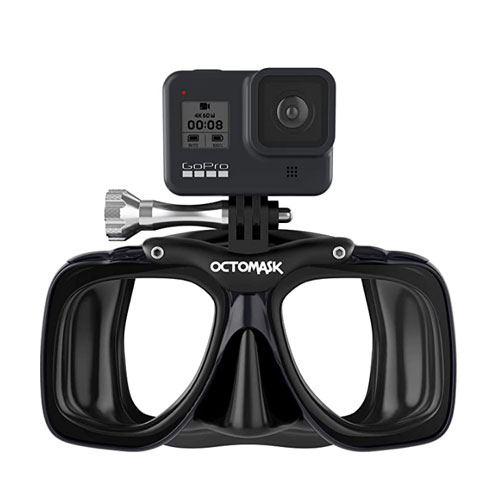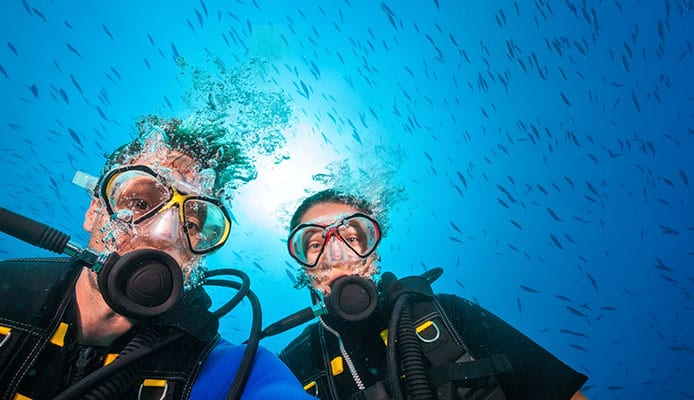
-
1.
-
2.
-
3.
-
4.
A well-fitted scuba mask is an important piece of your gear – it keeps the water out and allows you to see. Unfortunately, not everyone can easily find a mask that fits them well. People with small and narrow faces are well aware of the struggle that a leaking mask can cause. If you are in this category, the selection process and finding the best scuba mask for a small face requires even more attention. However, you don’t need to worry because there are plenty of fantastic small scuba masks on the market.
Manufacturers recognized the problem some time ago and started making high-quality scuba masks with dimensions adapted for smaller faces. Besides, many kids’ masks work well too. To make your choice easier, we’ve created a buying guide that discusses all the important features.
While looking for a scuba mask, remember that not all masks used for snorkeling is suitable for scuba diving. Many snorkeling masks might say they can be used for snorkeling, however, a scuba diving mask will have tempered glass lenses. But first, take a look at our selection of small face scuba masks, tried and tested by petite divers with excellent results.
OUR TOP PICK
Tusa M1001 FREEDOM HD Scuba Mask
- Stand Out Features - Why We Love It
- Five-position strap adjuster
- 180-degree view
- Round-edge skirt
Weight: 0.85 pounds
Materials: Silicone, glass
Measurements: 2” x 4” x 8”
EDITORS CHOICE
Scubapro Solo Dive Scuba Mask
- Stand Out Features - Why We Love It
- Fits even the smallest faces
- Tempered twin glass lens
- Comes with a plastic case
Weight: 0.9 pounds
Materials: Tempered glass, silicone
Measurements: 9” x 7” x 6”
BEST VALUE
Phantom Aquatics Panoramic Scuba Mask
- Stand Out Features - Why We Love It
- Tempered glass
- Large snorkel
- EZ equalize nose pocket
Weight: 1.1 pounds
Materials: Polycarbonate frame, silicone skirt
Measurements: 2” x 4” x 15
Cressi F1 Mini Frameless Scuba Mask
- Stand Out Features - Why We Love It
- Mono tempered-glass lens
- Wide split strap and push-button buckle design
- Hypoallergenic silicone double-feather edged skirt
- Can be folded flat for packing
- Easy to reach nose pocket for ear equalization
Weight: 12.8 Ounces
Materials: Silicone skirt, Tempered Glass lens.
Cressi Panoramic Wide View Mask Dry Scuba Mask
- Stand Out Features - Why We Love It
- Quick-adjust strap
- Heavy-duty design
- 180-degree view
Weight: 1.15 pounds
Materials: Polycarbonate frame, silicone rubber skirt
Measurements: 2.5” x 3” x 15.7”
Cressi BIG EYES EVOLUTION Scuba Mask
- Stand Out Features - Why We Love It
- Optical lenses available
- Crystal clear silicone
- Flexible buckle system
Weight: 0.75 pounds
Materials: Silicone,
Measurements: 4.65” x 4.8” x 7.72”
Atomic Frameless 2 Scuba Mask
- Stand Out Features - Why We Love It
- Easy to use buckles
- Low volume
- Wide, seamless lens
Weight: 1 pound
Materials: Silicone, glass
Measurements: 4” x 4” x 8”
Octomask GoPro Hero4 and Hero3+ Dive Mask
- Stand Out Features - Why We Love It
- GoPro attachment
- Fits all action cams using GoPro style mount.
- 100% fit guarantee
- Lightweight design
Weight: 0.7 pounds
Materials: Tempered glass, silicone, stainless steel
Measurements: 2.8” x 3.54” x 2.8”
- While diving or trying on a new mask, always make sure you don’t have any hair stuck between your mask and face. A break in the seal of the mask’s skirt will alter its fit - something you want to avoid when considering a purchase.
- Most masks come with a black or transparent skirt. By choosing any other color, you make yourself more visible and recognizable underwater.
- Having long hair can make it very uncomfortable or even painful wearing a standard mask strap, as the hair tends to get tangled all around it. Buying a mask strap made of neoprene material helps to keep your mask (and your hair) in place.
![]()
Scuba Diving Expert
How To Choose A Scuba Mask For Small Face – Buying Guide
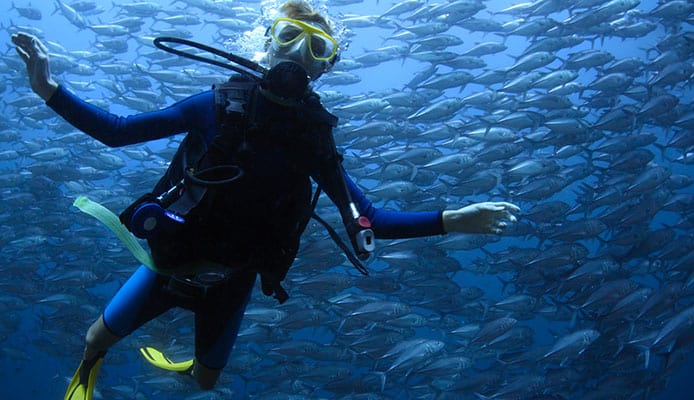
Fit
The fit is the most important thing when buying any scuba mask, especially when looking for the best scuba mask for small faces. A bad fit is one of the main reasons why scuba masks leak and don’t work in the first place. We advise that you check out the size of the mask (if it’s available) and compare it with other models. Also, it may be a good idea to see what other buyers had to say about a particular model and get some useful insight.
Even though we’re talking about online shopping here, it’s not a bad idea to try on the mask if you have the chance, maybe at your local dive store. Of course, you should know how to try on a scuba mask properly. Experienced scuba instructors recommend that you place the mask on your face and inhale through the nose (don’t press on the mask or use the strap).
If the mask creates suction and doesn’t fall off until you exhale, its skirt will probably be able to stop the mask from leaking. On the other hand, if the mask falls off immediately or you can’t create suction when inhaling, it would be best that you try a different model. Also, when using the mask, try to avoid tightening the strap too much because this can move the skirt and cause leaks.
Skirt Color
As you probably know, the skirt is the silicone edge that comes in contact with your face, creating a seal. While it’s easy to think that the skirt color only has an aesthetic purpose, this is not entirely true. A clear (transparent) mask skirt gives you a somewhat broader field of view (peripheral view) and allows more light in. Many divers feel that it’s less claustrophobic than a black skirt. Still, we want to add that a transparent skirt will become darker over time, and can get stained by neoprene if you throw all of your wet diving gear together.
On the other hand, a black skirt blocks out all light coming from the side. It eliminates glare and helps you see clearer in the water. A black skirt also works as a frame of a sort, making it easier for photographers and videographers to do their jobs. Many of the best scuba diving masks for small face models come with colored skirts, which fall somewhere in between. They can block some of the light but also give the mask a stylish and unconventional look.
Volume
The volume shows you how much air space there is inside the mask. Most scuba and snorkel masks for small faces have a low volume, which makes sense considering their smaller dimensions. A low-volume mask usually has the lens closer to your face, often making the field of view broader. Low volume also makes it easier to clear the mask when water comes in (especially if the model doesn’t have a purge valve).
You might also be interested in:
Besides, low-volume masks are usually easier to fold and pack in the pocket of your scuba BCD. However, some people don’t like it when the window sits so close to their face and say that they feel discomfort while wearing it. It all comes to personal preference, but a low-volume mask has its advantages when it comes to small faces.
Windows
Depending on the design, most small face scuba masks (and other “regular” masks) come with either one or two windows (lenses). This doesn’t only impact how the mask looks, but in a large part influences its functionality too. For example, a single lens gives you better front vision (doesn’t have nose separation blocking your view). On the other hand, it often has a larger volume (harder to fit) and isn’t compatible with corrective lenses.
A dual window (lens) means the mask has two separate lenses, usually shaped like a teardrop. While this type has a narrower side view, divers report that it works better for looking down. Also, you’ll come across models that have extra windows on the sides (like the Phantom Aquatics mask we’ve featured), which is great if you need extended peripheral vision.
The window on the mask is made of tempered glass, which is a great choice. It’s tough to crack and, even if it does, it won’t injure your eyes. Standard glass is a big injury risk if it breaks, while plastic fogs up easier than you would expect.
Furthermore, you’ll also stumble upon color correction dive masks with colored lenses, as well as masks that use prescription lenses (like the Deep Blue Gear Maui Jr. we featured). If you want to learn more, be sure to check our article on the differences between mask lenses.
Additional Features Prescription Snorkel Mask
The features of your new scuba mask make it more functional and enjoyable to use. While some are almost standard nowadays (nose pocket, split strap), some are not available on every model (button buckle, purge valve, special lenses).
A nose pocket is made of silicone and has an important role in the function of the mask. It needs to be spacious enough for your nose, so the mask can form a good seal under it. Also, you should be able to pinch it and blow on your pinched nose when equalizing pressure underwater.
As for the seal, a feathered double skirt does wonder. It creates better suction around the edges and significantly improves the fit, reducing the chance of leaking to a minimum. A split strap makes the mask more secure and comfortable, while a button buckle makes it easy to tighten and loosen the mask on the go.
Features like special lenses are great for people with impaired vision because diving with glasses isn’t possible most of the time. Finally, you’ll find that some of the best scuba masks for small face models come with a purge valve, allowing you to quickly and easily clear the water.
Related Reviews: Prescription Snorkel Mask & Scuba Mask With Purge Valve
FAQs
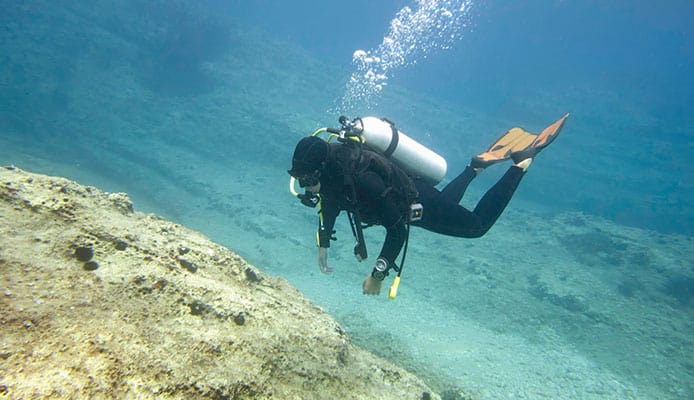
Q: How To Clear a Scuba Mask?
To clear a scuba mask from water, you need to do the following. First, tilt your head back (so you’re looking up), and press on the top of the mask to create a secure seal and prevent it from moving. Then, exhale hard through the nose (head still tilted back). The exhaled air pushes the water out of the mask and leaves it clear. If you need more help with this, be sure to read our article on clearing a scuba mask.
Q: What Is The Difference Between Scuba And Snorkel Mask?
The main difference between these two is the construction quality – a scuba mask needs to be tougher. Because scuba masks are used at larger depths, they need to be made of stronger materials that can withstand the pressure.
A snorkeling mask for a small face will often have a plastic window, while the best scuba diving mask for a small face only comes with tempered glass lenses. Besides, scuba masks always have a skirt that completely covers your nose. If you’re interested in learning more, we have an article that discusses the differences between snorkeling and scuba diving in detail.
Globo Surf Overview
Without a reliable mask, you can’t count on having a good time. It’s important for both safety (eye protection) and enjoyment (seeing the world around you). As this article has shown, there are options even if you have a small face. We hope the guide has helped you make your pick that you’ll gladly put on your dive checklist. Your new mask will allow you to have fun without worrying about a leaking mask ever again.
More Scuba Reviews:
- Dive Camera
- Bcd For Beginners
- Dive Watches Under 200
- Womens Wetsuits
- Pole Spear
- Scuba Tank
- Rebreather
- Dry Suit
- Dive Bags
- Dive Compass



